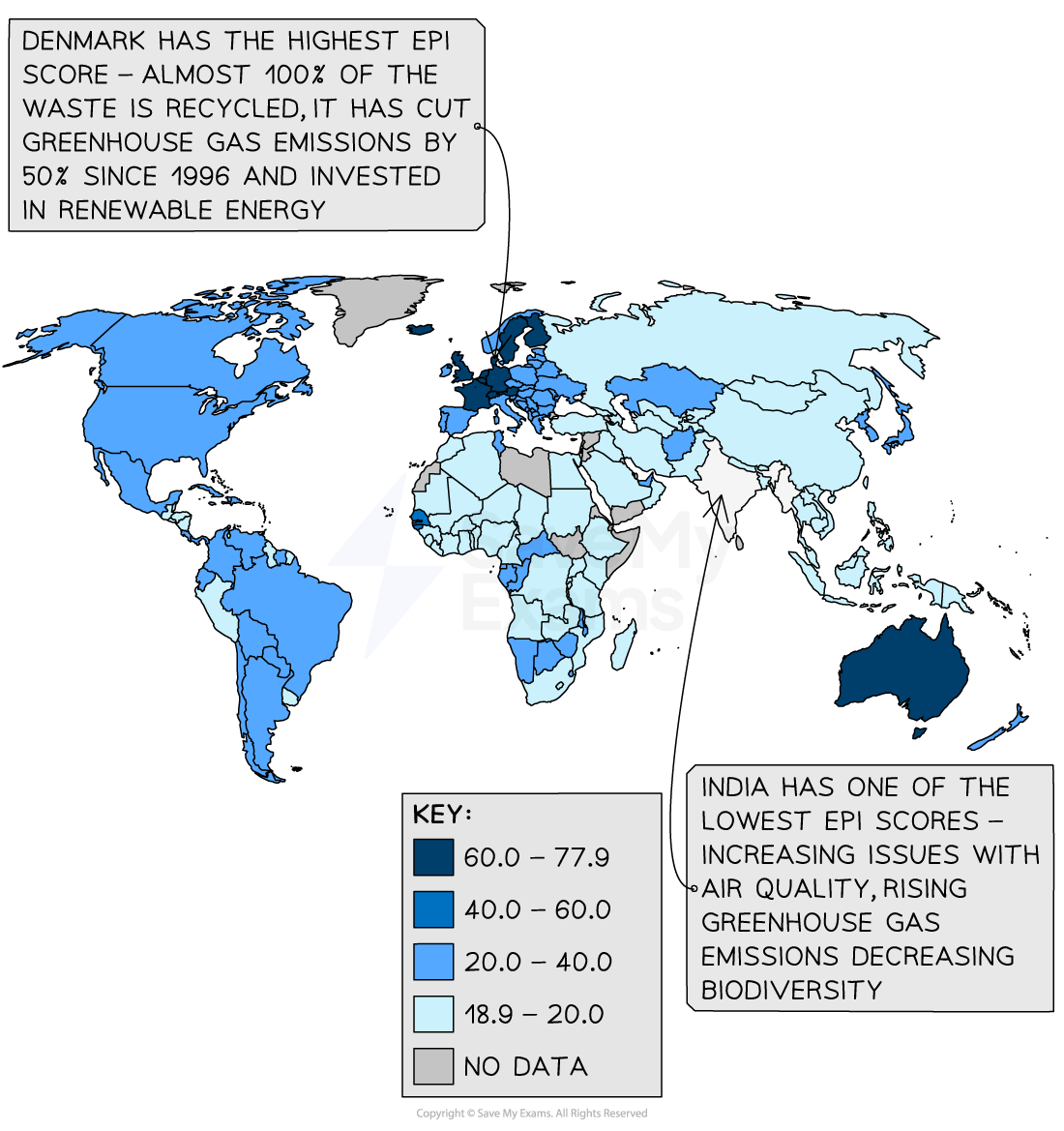Superpower Resource Demands
- As the world population increases so does the demand on resources
- Superpowers and emerging superpowers place the greatest demands on resources and have the largest environmental footprint
Water
- Over 2.7 billion people suffer water scarcity for at least one month each year
- Both India and China are suffering increasing water scarcity due to:
- Increasing industry and agricultural demand
- Increasing population
- Pollution of fresh water sources by industry, agricultural and domestic waste water
- Uneven water supply, the highest demand in China is in the north-east whereas the highest supply is in the south
- Increasing drought
Food
- The demand for food increases as a result of:
- Population increase
- Increased calorie intake
Awaiting image
Annual worldwide demand for plant and animal based food
Fossil fuels
- As countries develop, their energy requirements increase as:
- More energy is used in factories and industry
- Domestic demand increases as people have more technology - washing machines, TVs, fridges etc...
- Many emerging countries rely on fossil fuels as they are cheaper and they may have their own reserves of fossil fuels
- In Indonesia 81% of electricity is generated by fossil fuels
- Since 2011 China has used more coal than the rest of the world combined - 57% of China's energy is produced using coal

Minerals
- Minerals are used in many different ways:
- Energy - fossil fuels used to produce energy, components for renewable energy (solar panels, turbines)
- Industry - all products from mobile phones to cars use minerals in their manufacture from oil to copper
- Construction - materials to make concrete, bricks
- Metals
- The use of minerals is projected to continue to increase, with particularly demand for minerals such as graphite and lithium which are used in batteries and renewable energy

Projected demand for minerals for energy technologies
Environmental degradation
- The increased demand for resources is leading to significant environmental degradation including:
- Water pollution from industry, agriculture and domestic waste
- An estimated 80% of groundwater in China is unfit for human consumption
- Severe air pollution
- About 90% of the global population experienced unhealthy air quality
- In 2019 7 of the 10 most polluted cities were in India
- Soil degradation is an increasing issue around the world
- The UN estimates 40% of the world's land is degraded
- Growing food becomes more difficult as soils become infertile, leading to food shortages and reducing food production by up to 12% by 2050
- The regeneration of 2.5cm of topsoil can take hundreds of years
- Water pollution from industry, agriculture and domestic waste
- The Environmental Performance Index ranks countries based on a wide range of environmental factors including water and air pollution, and soil degradation

Environmental Performance Index 2022
Carbon emissions
- Superpowers or emerging superpowers are the largest emitters of CO2
- China emits over 30% of all global greenhouse emissions, followed by the USA (13%) and the EU (8%)and India (8%)
- The UN reported in 2019 that the group of 20 major economies (G20) are responsible for 78% of greenhouse gas emissions

Share of global greenhouse gas emissions
Exam Tip
It is important to remember that developed countries are making greater progress within the country at reducing emissions, improving air quality and reducing soil degradation. However, it is often their demands for resources and products that is leading to decreasing environmental quality in emerging and developing countries.


